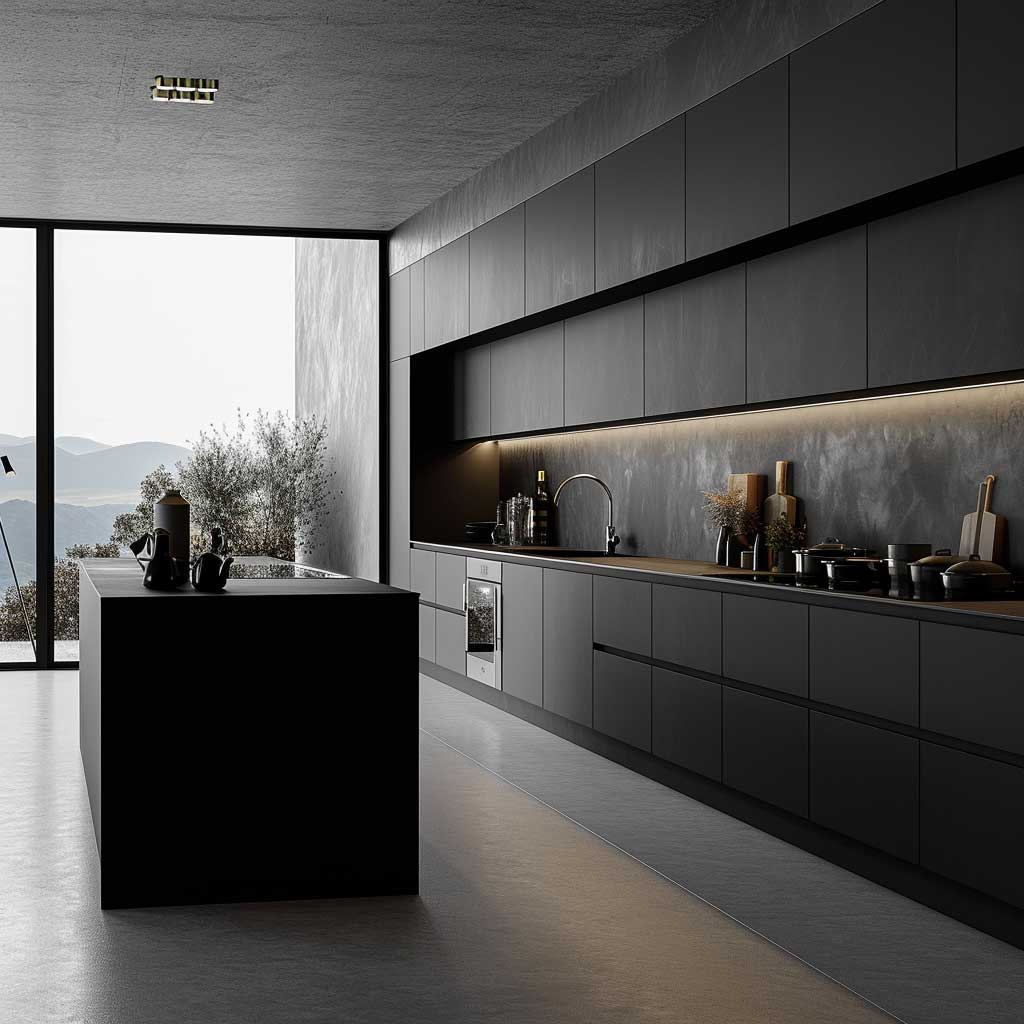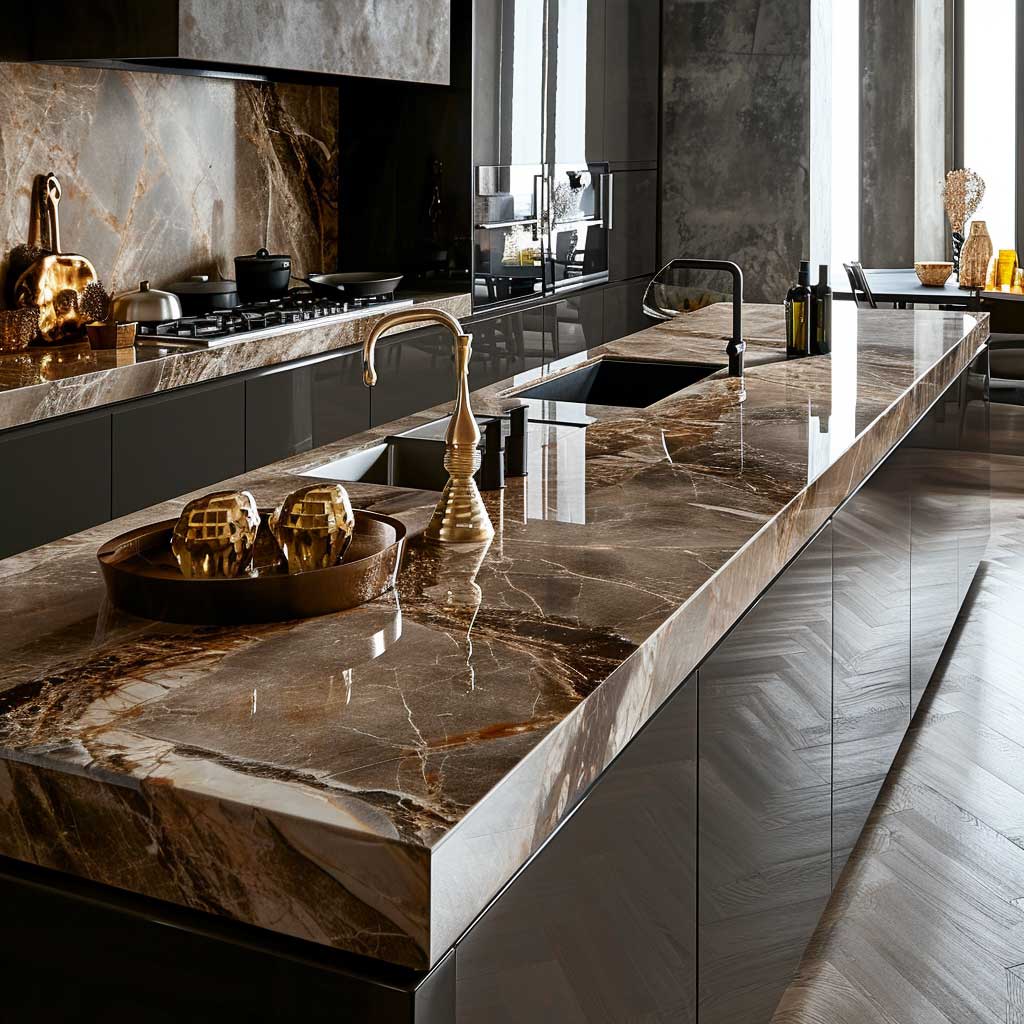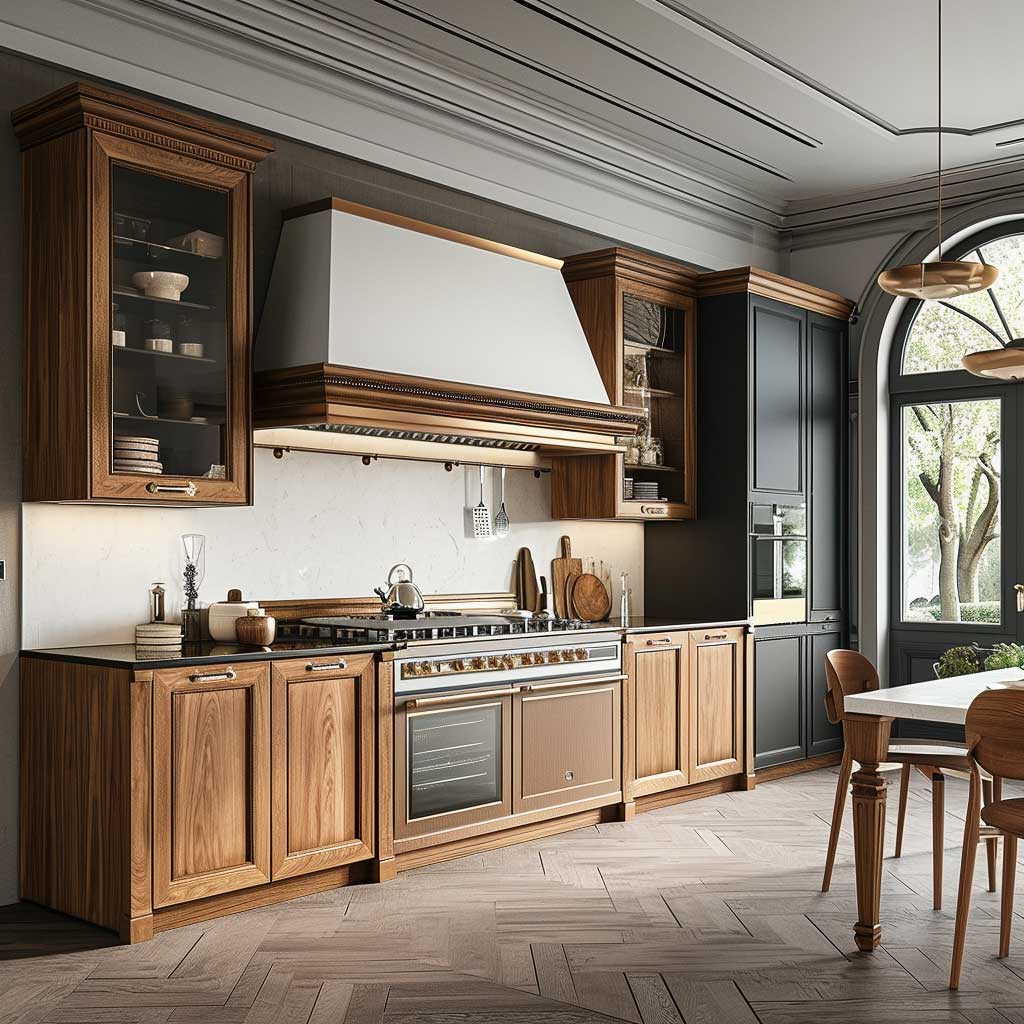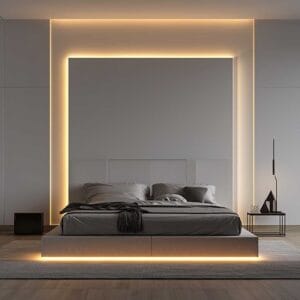The allure of modern Italian kitchen design lies in its ability to merge sleek functionality with aesthetic elegance, creating spaces that are as beautiful as they are practical. Rooted in a rich design heritage, these kitchens offer a contemporary twist on classic Italian style, emphasizing clean lines, high-quality materials, and a palette that complements both cooking and living. This exploration delves into a variety of modern Italian kitchen design ideas, each offering a unique way to bring sophistication and style to the heart of your home.
Chic Minimalism in Modern Italian Kitchen Decor




The concept of chic minimalism in modern Italian kitchen design is a perfect blend of form and function, mirroring the essence of Italian craftsmanship and contemporary aesthetics. This design philosophy revolves around the idea of ‘less is more’, emphasizing clean lines, uncluttered spaces, and a monochromatic color scheme. The resulting kitchens are not only visually stunning but also highly functional, offering an unpretentious luxury that is distinctly Italian.
At the heart of chic minimalism in Italian kitchen design is the focus on quality over quantity. Every element, from cabinetry to appliances, is chosen for its ability to combine aesthetic appeal with practical utility. The furniture and fittings typically feature sleek, geometric lines, devoid of any unnecessary embellishments. This simplicity allows the intrinsic beauty of the materials, whether it’s polished stone, lacquered wood, or brushed metal, to stand out.
Color plays a vital role in these minimalist designs. Typically, the palette is restrained, with an emphasis on whites, blacks, and greys, creating a canvas that feels both timeless and modern. This monochromatic scheme is occasionally punctuated with subtle accents of color, strategically used to add depth and interest to the space without overwhelming it.
The layout in chic minimalist Italian kitchens is meticulously planned to ensure a seamless flow. The open-plan style is often favored, blurring the lines between cooking, dining, and living areas. This not only creates a sense of spaciousness but also fosters a more social environment, where the kitchen becomes a place for gathering and interaction.




Storage solutions in these kitchens are ingeniously integrated into the design. Cabinets and shelves are often built into the walls, maintaining a clean and uncluttered appearance. The storage is not only functional but also part of the overall aesthetic, with hidden handles and push-to-open mechanisms contributing to the sleek look.
Lighting is another crucial element. It is thoughtfully designed to enhance the minimalist aesthetic while providing adequate illumination for cooking and dining. Recessed lights, under-cabinet strips, and pendant fixtures are often used in combination, offering both ambient and task lighting that can be adjusted as needed.
Technology and innovation are seamlessly integrated into chic minimalist Italian kitchens. Smart appliances, induction cooktops, and advanced ventilation systems are standard, offering the latest in culinary technology without disrupting the kitchen’s minimalist charm.
Despite the emphasis on minimalism, these kitchens do not compromise on comfort and warmth. The use of natural materials, soft textures, and ergonomic design ensures that the space is welcoming and comfortable. The minimalist approach is balanced with a focus on human-centric design, making the kitchen a pleasant space to spend time in.
In summary, chic minimalism in modern Italian kitchen design is a celebration of simplicity and sophistication. It’s a design approach that strips away the unnecessary, focusing on the essentials to create spaces that are both beautiful and functional. These kitchens are a reflection of a lifestyle that values quality, simplicity, and the joy of gathering around the art of cooking. They stand as a testament to the enduring appeal of Italian design, where minimalism is not just a style, but a way of life.
Luxurious Textures in Italian Kitchen Interiors




Luxurious textures are a defining feature of modern Italian kitchen design, bringing a tactile and visual richness that elevates these spaces beyond mere functional areas. In the art of Italian kitchen design, the interplay of varied textures creates an experience that appeals to the senses, making the kitchen not only a place for culinary endeavors but also a haven of sophisticated comfort. This approach to design emphasizes the importance of materials and surfaces in creating a kitchen that is as luxurious as it is practical.
The luxury in these kitchens is conveyed through a careful selection of materials. High-quality woods with rich grains, polished or honed stone countertops, and sleek metallic finishes are commonly used to create a symphony of textures. Each material is chosen for its ability to add depth and character to the kitchen, contributing to an overall sense of opulence.
Incorporating different finishes within the same space is a hallmark of this design style. Glossy lacquered cabinets might contrast with matte stone surfaces, or brushed metal accents could be juxtaposed against smooth glass. This variety in finishes not only adds visual interest but also creates a dynamic space that changes with the light and perspective.
The flooring in these kitchens is often a focal point, with materials ranging from elegant marbles to warm hardwoods. The choice of flooring can set the tone for the entire kitchen, whether it’s the classic luxury of marble or the warm, inviting feel of wood. In some designs, contrasting floor materials are used to delineate different areas within the kitchen, such as cooking and dining zones.




Textiles also play a significant role in adding luxurious textures to Italian kitchens. Designer rugs, plush upholstered seating, and elegant window treatments can soften the harder lines of cabinets and appliances, adding a layer of warmth and comfort. These textiles not only enhance the aesthetic but also contribute to the acoustics of the space, making it more inviting and comfortable.
Lighting in a texture-rich Italian kitchen is strategically used to highlight the various surfaces and materials. Under-cabinet lights, pendant lamps, and recessed ceiling fixtures are often employed to cast a gentle glow that accentuates the textures, enhancing their visual impact. The play of light and shadow across different surfaces adds a dynamic quality to the kitchen.
Practicality is not overlooked in these luxurious kitchens. The textures are not only visually pleasing but also functional. Surfaces are chosen for their durability and ease of maintenance, ensuring that the kitchen remains practical for everyday use. Advanced kitchen technologies are integrated seamlessly, offering the latest in culinary innovation without disrupting the aesthetic.
The color palette in a texture-rich Italian kitchen is often understated, allowing the textures themselves to take center stage. Neutral tones like whites, grays, and earthy hues are commonly used, providing a backdrop that lets the materials shine. Occasional pops of color may be introduced through accessories or artwork, adding a personal touch to the space.
In summary, luxurious textures in modern Italian kitchen design represent a fusion of sensory delight and functional practicality. These kitchens are masterpieces of interior design, where every material and surface is carefully chosen to create an environment that is both sumptuously comfortable and highly efficient. They reflect the Italian flair for combining artistry with utility, resulting in spaces that are as pleasing to the touch as they are to the eye.
Fusion of Tradition and Modernity in Italian Kitchen Design




The fusion of tradition and modernity in Italian kitchen design is a captivating trend that marries the rich heritage of Italian craftsmanship with contemporary aesthetic sensibilities. This unique blend results in kitchens that are not only functional but also deeply rooted in cultural history, offering a space that is both timeless and avant-garde. Embracing this fusion in design allows for the creation of kitchens that are reflective of Italy’s storied past, yet equipped with the conveniences and sleekness of the modern world.
Central to this design approach is the respect for traditional materials and techniques. Elements like handcrafted wood cabinetry, classic stone countertops, and artisanal ceramic tiles are often incorporated. These components carry the essence of Italian history, evoking the rustic kitchens of the past. However, in these modern interpretations, they are reimagined in ways that align with contemporary design principles, resulting in a harmonious balance between old and new.
The layout of these kitchens often follows a more traditional plan, with a focus on functionality and ease of movement. However, modern design elements are woven into this layout. State-of-the-art appliances are seamlessly integrated, and innovative storage solutions are implemented, ensuring that the kitchen meets the demands of today’s lifestyles without losing its traditional charm.
In these kitchens, color plays a significant role in bridging the gap between past and present. While classic hues like creams, terracottas, and olive greens nod to the traditional Italian palette, they are often complemented by modern accents in bold or neutral tones. This juxtaposition of colors adds depth and contemporary flair to the space.




Lighting in these fusion kitchens is a thoughtful mix of old and new. While the warm glow of pendant lights or chandeliers might hark back to earlier times, they are often paired with modern LED lighting solutions. This combination ensures that the kitchen is not only beautifully illuminated but also energy-efficient and functional.
The use of textures is another area where tradition meets modernity. Rough-hewn wood beams may coexist with sleek, lacquered cabinet finishes, or hand-painted tiles might be set against smooth, stainless steel surfaces. This interplay of textures adds visual interest and tactile diversity, enriching the overall experience of the space.
Technology, too, finds its place in these kitchens. Smart home systems, high-performance appliances, and cutting-edge cooking gadgets are integrated, providing convenience and efficiency. However, this technology is often subtly incorporated, ensuring that it enhances rather than overshadows the traditional elements of the design.
In terms of decor, these kitchens might feature a mix of antique pieces and modern art, reflective of a space that celebrates both its heritage and its progression into the future. Decorative elements are chosen not just for their aesthetic appeal but also for their ability to tell a story, whether it’s through a vintage Italian pottery piece or a contemporary sculpture.
In conclusion, the fusion of tradition and modernity in Italian kitchen design offers a unique and compelling approach to interior design. It allows for the creation of spaces that are rich in history and character, yet fully equipped to meet the demands of modern living. This blend of old and new, rustic and sleek, creates kitchens that are not just functional spaces but also living pieces of art, reflecting the evolving story of Italian design.
Modern Italian kitchen design is an art form that balances the demands of daily life with the desire for beauty and elegance. These designs not only cater to the practical needs of cooking and storage but also stand as a testament to the power of interior design in enhancing lifestyle. From chic minimalism to luxurious textures and the blending of tradition with modernity, these kitchen ideas provide a glimpse into how Italian design sensibilities can transform everyday spaces into extraordinary ones.












